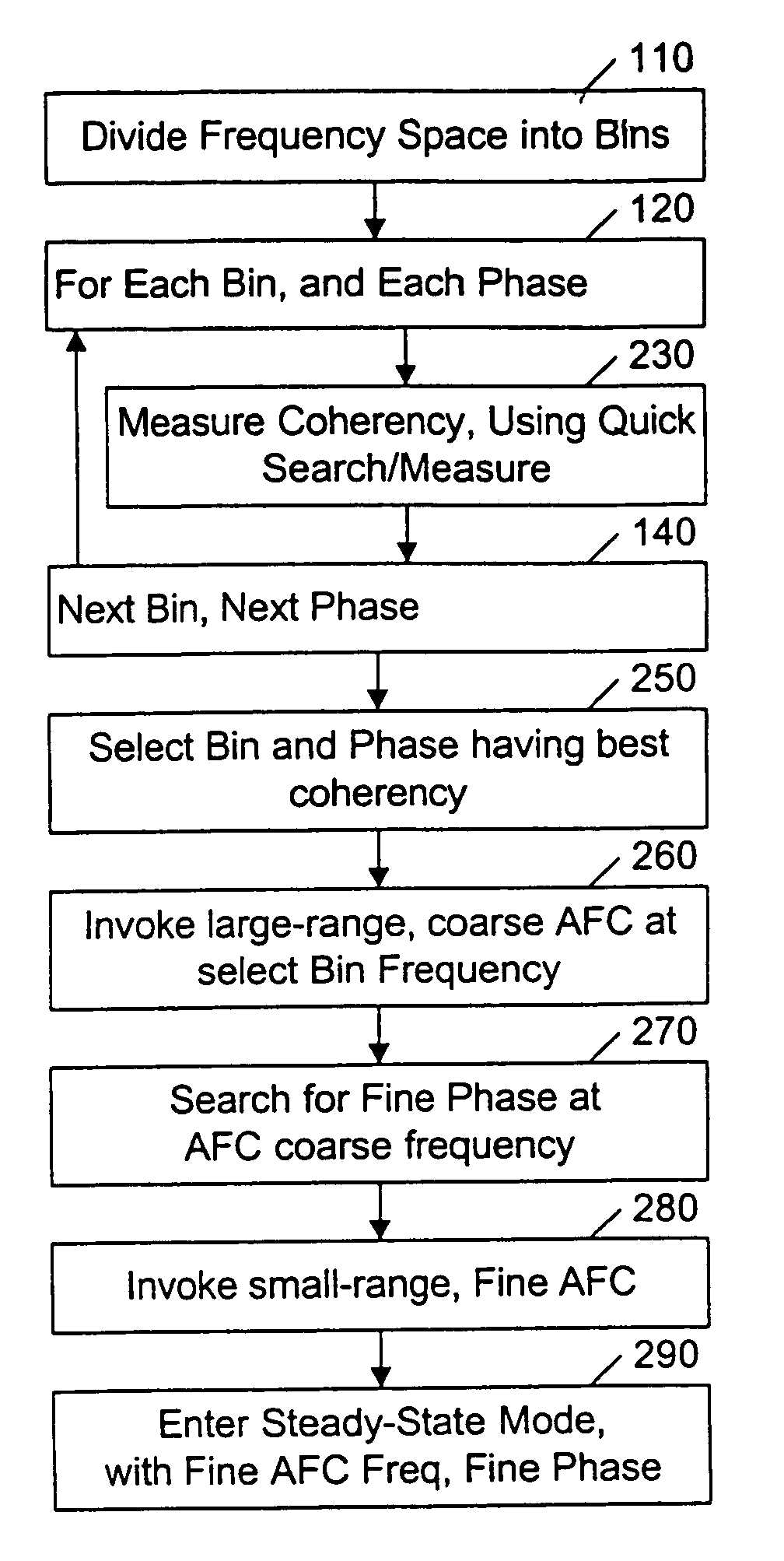Iterative CDMA phase and frequency acquisition
a phase and frequency acquisition technology, applied in the field of communication, can solve the problems of increasing the likelihood of demodulation errors, affecting so as to improve the accuracy of initial frequency and phase acquisition, increase the time required to acquire, and improve the effect of frequency and phase accuracy
- Summary
- Abstract
- Description
- Claims
- Application Information
AI Technical Summary
Benefits of technology
Problems solved by technology
Method used
Image
Examples
Embodiment Construction
[0018]FIG. 1 illustrates an example flow diagram of a conventional CDMA frequency and phase acquisition system. As noted above, to detect a coherent signal, the receiver must be operated within a minimum range of the frequency as the transmitter, so that, for example, an initially in-phase demodulation does not go out-of-phase before the end of the code sequence. Generally, the variance of transmitters about a specified frequency is larger than this minimum range, and therefore the receiver is configured to search at a plurality of frequency ‘bins’, the size of each bin being less than or equal to this minimum range. The bins are defined at 110, and the search is conducted at a nominal frequency within each bin, via the loop 120–140.
[0019]At 130, the receiver measures the coherency of each code phase at each bin frequency, typically by initiating the code sequence at incrementally different phases. The code sequence has a given length, in bits, and the phase increment is typically h...
PUM
 Login to View More
Login to View More Abstract
Description
Claims
Application Information
 Login to View More
Login to View More - R&D
- Intellectual Property
- Life Sciences
- Materials
- Tech Scout
- Unparalleled Data Quality
- Higher Quality Content
- 60% Fewer Hallucinations
Browse by: Latest US Patents, China's latest patents, Technical Efficacy Thesaurus, Application Domain, Technology Topic, Popular Technical Reports.
© 2025 PatSnap. All rights reserved.Legal|Privacy policy|Modern Slavery Act Transparency Statement|Sitemap|About US| Contact US: help@patsnap.com


